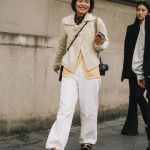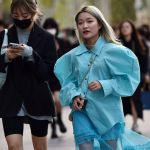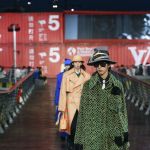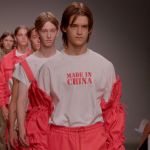
nss fashion guide: China
Awaiting Shanghai Fashion Week fw19
October 11th, 2018
From March 27th to April 3rd the city of Shanghai will host one of the most anticipated Eastern Fashion Weeks of the season. The FW19 collections created by Chinese designers will, between innovation, Western inspiration and that unmistakable exaggerated touch, raise a question that has been obsessing the Western fashion system: is China the future capital of fashion?
In this Country, just in 2017, it was reported an increase in the fashion industry of 4.3 trillions yuan ($686 billions), in comparison to the 3,2 trillions yuan recorded in 2015, that’s to say 7,5% of the total usage.
Waiting for the FW, nss magazine has prepared for you a complete guide to fully understand the fashion Made in China.
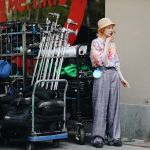
Shanghai Fashion Week
Founded in 2001, SFW in its first editions looked more like a fair than a regular fashion week, that suffering from the power of the Big 4 (NYC, London, Milan and Paris), was still trying to spread its fashion concept, not supported by an influential crowd yet. Over the years Shanghai managed to find its winning card, not to challenge one of the fashion week giants, but to create one different from all the others, unique and original. In order to succeed the SFW had to spread its ‘Chinese word’ and managed to do it thanks to projects promoted in 2015, like China-Britain Cultural Exchange Year, cultural exchanges that included countries like Italy and Great Britain. Shanghai gained the title of cultural and financial capital city and epicenter of the commercial trades with the Western world, a city of movement and evolution, from economy to arts, the Paris of the Orient. All regained back for the fashion week that twice a year stages the best of local designers, young people who went to the best school of England and Usa, and then came back to their motherland.
Sara Sozzani Maino, Head of Vogue Talents and vice director of Vogue Italia, claims “Studying in foreign countries like Italy, United States and Great Britain definitely improves the quality of the work of designers that come back to China […] and even though Chinese designers are still working their way in the most prestigious places of the system, and today show in Paris, Milan and London, Shanghai still managed to keep to itself its best talents.”
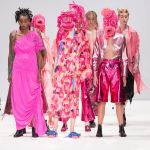
Beijing VS Shanghai
The Chinese land can boast not one but two different fashion weeks. There’s the Beijing Mercedes Benz China International Fashion Week that takes place twice a year and is organized by the China National Textile and Apparel Council, and then the China Fashion Week (SFW) organized by Shangtex, a company focused on crafting and distribution of textile products. Between the two events there’s a subtle competition, they both try to catch the attention of the widest audience possible, but the difference is the aim. While Shanghai works as a display for indipendent designers and is more similar to fashion weeks like the ones of London and NY, Beijing is much more focused on the sale and on the retail, and is an occasion for Chinese companies to present their projects.
![]() Brief history of Chinese fashion
Brief history of Chinese fashion

To fully understand the dynamics that drove this industrial giant to take part in the complex fashion world, we need to take a step back, to the 1800s, to realize how deeply Chinese people care about fashion and how naturally they have this unique and different fashion approach.
Before the 1800s there wasn’t a real Made in China style, back then clothes were connected with tradition, religion, customs and social differences, since colors, embroderies and fabrics were the symbol of the belonging to a specific social class. During the first years of the Qing dynasty (early 1900s) some European merchants landed in Shanghai and Canton and, thanks to them, Chinese people had the chance to see for the first time European techniques, a knowledge they learnt and developed according to their surroundings.
Zhao Chunlan is considered the father of Chinese fashion: son of tailors, he spent his adolescence in the United States where he learnt this work, especially the reproduction of the “Western style” woman’s jacket, a knowldege that, once he got back to China, taught to his pupils too. If you want to know one of the first local labels, instead, it's Hong Xiang, a luxury brand especially beloved by aristocrats and celebs, in the first part of the 20th century. These were the first steps towards a real fashion revolution, through the knowledge of what there was outside the borders, through the conformation to the Western taste, and through women’s progressive desire to appear beautiful. In the 20s the trend in China is the cleft. This is what characterizes the gipao, the traditional dress that will arrive in the Western world too thanks to The World fo Suzie Wong, a 1960s movie in which the main character Nancy Kwan wears this item, long to her knees, golden and short sleeved throughout the entire film.
What happens next? The revolution, its political, social and costum revolution. Mao Tse-Tung arrives in 1966, determined to influence every single aspect of the life of Chinese people with his communism, he introduces the zhongshan, a short jacket with a four-buttoned collar, which becomes the item to be worn by everyone, including him. The imposition of this Mao-style jacket, that could have been grey, beige, green or blue, wasn’t just the latest tyrannical act from Mao, but it had a real aim, to unify all genders. The zhongshan meant the cancellation of the freedom and the female aesthetic brought by the gipao.
Starting from the end of the 70s the Chinese women’s fashion is once again revolutionised. After Mao’s decline make their debut high heels, outrageous looks, exaggerated jewels and accessories and the obsession for colors, wealthy families strat buying French items and Pierre Cardin stages his runway in Bejing for the first time. It’s 1979.
It didn’t take long before brands like Gucci, Louis Vutton and Chanel enter officially the Chinese market, and after this move the phenomenon of fake goods begins as well. Local companies begin to design items very similar to the ones of the most famous fashion houses, offering in this way new products to the internal market, but Made in China.

“For a long time there has been a big gap on the Chinese market between [luxury] international brands and local fashion manufacturers, who build their brands focusing on the production of cheap clothes in replicated designs.” Nevertheless, continues Liu, “Today, young designers like Angel Chen and Feng Chen Wang are expanding their client base and are showing their personal idea of an ideal lifestyle for the next generations. They offer fresh and original concepts on fashion and style, good quality and good prices.”
So how’s fashion in China like? A bit trash, a bit minimal, a bit sexy, a bit baroque, able to speak to everyone. Is this the key to its success?
Designers to discover
But who are the main protagonists of this on going revolution? We’re talking about young designers that at the age of 25 or 28 years old have already shown their collections in Milan and New York, visionaries of today, and who knows, future creative directors of the most important fashion houses of tomorrow.
Angel Chen: colorful, over the top, exaggerated, technical. This designer, despite her young age, has already presented her FW17 collection in Milan.
Feng Chen Wang: asymmetrical cuts, colors combined with intelligent randomness, experimentation and a visionary SS19 collection we described here.
Xander Zhou: crazy, different, and always with a new story to tell through his creations. Here we talked about his aliens and pregnant men on the runway.
Influencers to discover
Yoyo Cao
Samantha Mariko
Justine Lee




























































